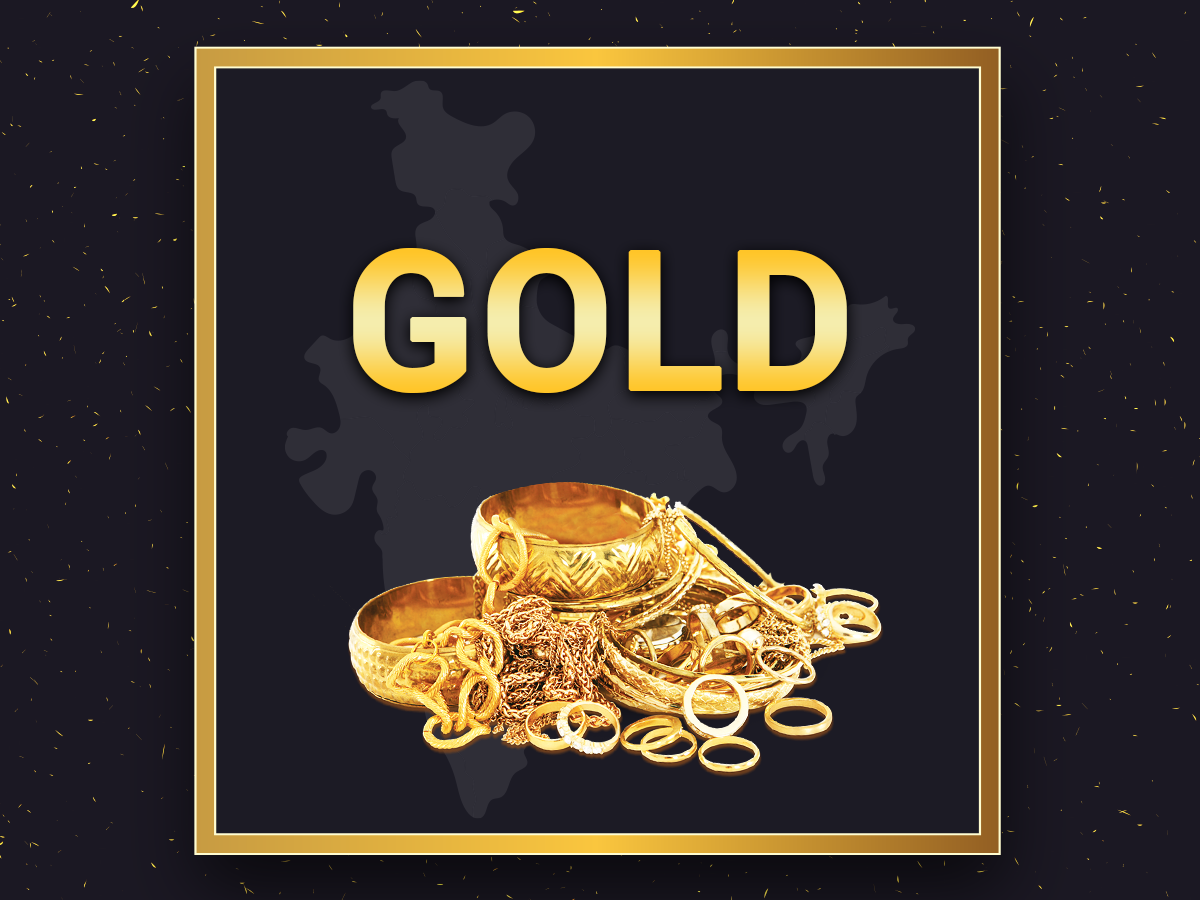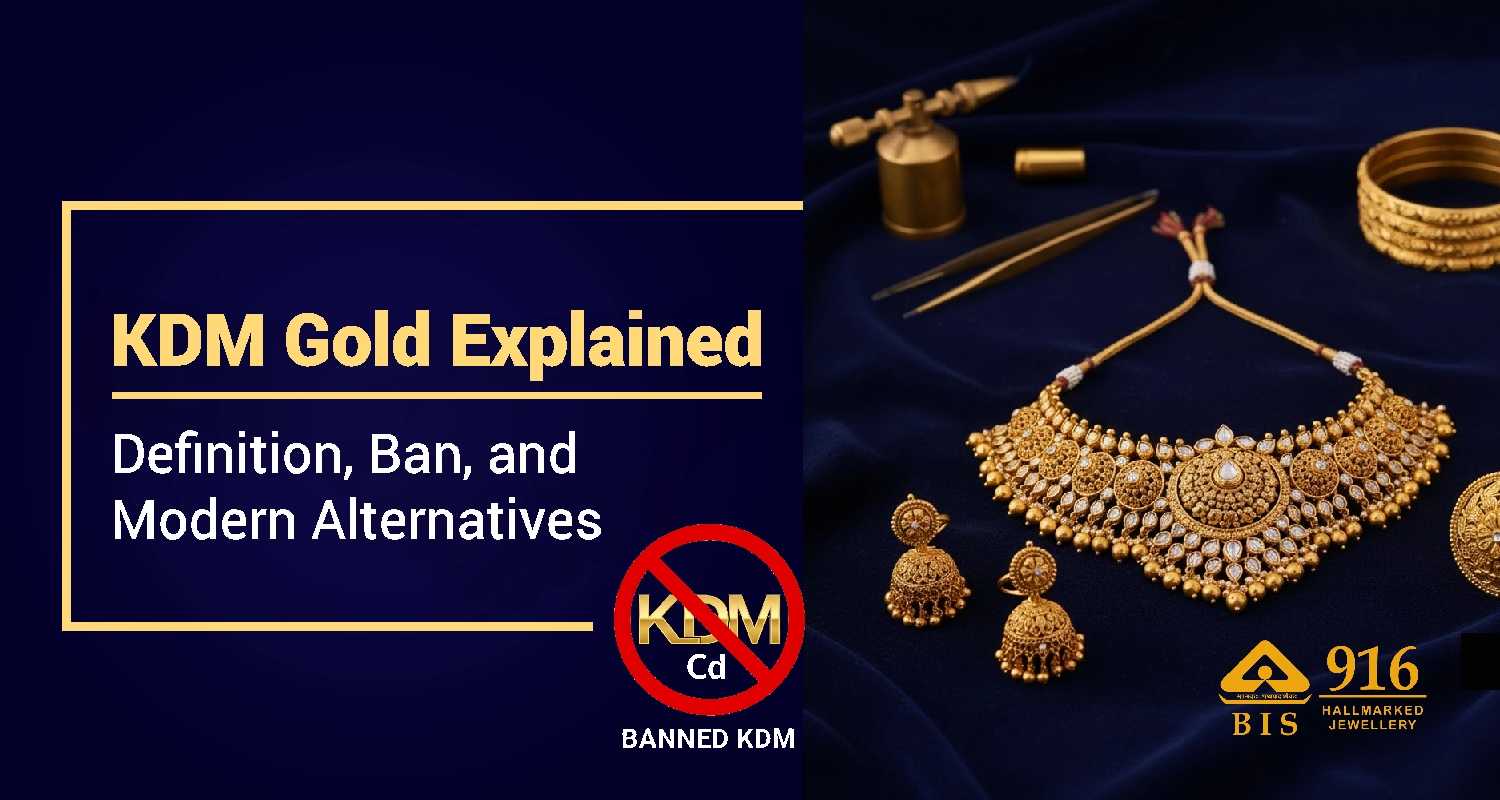Gold Price History in India & its Trend - Key Insights

For every household in India, gold has always held a special place, not just as a symbol of wealth but as an heirloom of traditional values, emotion, culture, and security. Be it for weddings or any other festive occasion, it’s woven deeply into our sentiments. If we were to look at the gold price history in India, it would present a rather interesting story. It's a strong reflection of the country’s economic journey, its ties with global markets, and the evolving habits of Indian buyers. Understanding how gold prices in India have changed over the years can help investors and everyday buyers make more informed and confident decisions about when and how to invest in this timeless treasure.
History of Gold Price in India
Gold’s connection with India runs deep, dating back to the Indus Valley Civilization, one of the earliest centres of human progress. As per archaeological evidence, gold was used not just for adornment but also for trade and early economic exchange. Even if formal records of gold prices didn’t exist in ancient times, these discoveries highlight gold’s undeniable value in early Indian societies. From being a symbol of status to serving as an early form of wealth, gold’s legacy in the gold price history of India began long before markets existed. Iit was, and still is, a part of our identity and tradition.
Year-wise Gold Price History(24 Karat per 10 grams)
Over the decades, Gold Rates in India have witnessed a consistent upward trend, driven by inflation, changing economic policies, and shifts in international markets. Studying the Gold Price History offers valuable insights not only into India’s financial evolution but also into how global forces influence local investment behaviour. The table below shows the average annual gold prices (24 Karat) from 1964 to 2023, a shining reflection of how this precious metal continues to hold its worth across generations.
| Years | Price (24 karat per 10 grams) |
|---|---|
| 2025 | ₹128,596.00 (Till Today) |
| 2024 | ₹77,913.00 |
| 2023 | ₹65,330.00 |
| 2022 | ₹52,670.00 |
| 2021 | ₹48,720.00 |
| 2020 | ₹48,651.00 |
Indian Gold Rate Historical Chart
How Global Events Affect Indian Gold Rates
The Gold Rate History of India has always been influenced by what happens around the world. Economic downturns, wars, oil price shocks, and global recessions often push investors toward gold, increasing its demand and value. Similarly, when the Indian Rupee weakens against the US Dollar, gold becomes more expensive domestically since India imports most of its supply. Fluctuations in interest rates, inflation levels, and market sentiment across the world also ripple into local markets. Simply put, the story of gold rates in India is closely intertwined with global events — understanding these patterns can help predict how gold might behave in the future.
Comparison Between 22 Karat and 24 Karat Gold Rates Across Time
The difference between 22 karat and 24 karat gold goes beyond numbers, it’s about purpose. 24 karat gold, almost pure (99.9%), is primarily used for investment, while 22 karat gold (91.6%) is mixed with small quantities of other metals, making it ideal for jewellery that’s both durable and beautiful. Over time, the Gold Prices in India for these two types have moved in similar directions but at slightly different levels, reflecting the purity and usability gap. Understanding these variations helps buyers choose wisely, whether it’s investing in pure gold for the long term or purchasing jewellery that carries emotional and cultural value.
Factors Influencing Gold Price Volatility in India
The price of gold fluctuates constantly, influenced by a combination of domestic and global factors. These factors include:
Supply and demand:
The availability of gold plays a crucial role when it comes to determining the price of gold. When gold is scarce, its price rises, while an increase in its supply can cause its price to fall.
Inflation:
Inflation, which is a constant rise in prices, also affects the price of gold. As currency prices fall, gold, considered a store of value, becomes more attractive, driving up its value.
International Markets:
The global rise in gold prices also impacts the Indian market. An increase in the international price of gold has a significant impact on domestic prices.
Government policies:
Government policies such as import duties and taxes can also affect gold rates in India.
Factors Influencing Gold Price Volatility in India
The movement of gold prices in India is shaped by multiple interconnected factors:
- Global Economy: Inflation, interest rates, and economic slowdowns often boost gold
demand.
- Currency Fluctuations: A weaker rupee against the dollar increases import costs, lifting
domestic gold prices.
- Government Policies: Import duties, taxation, and trade restrictions can directly affect
pricing and availability.
- Demand & Seasonality: Festivals and weddings in India trigger seasonal spikes in demand,
often driving prices upward.
- Geopolitical Uncertainty: Conflicts or crises make investors seek safe assets like gold.
Together, these factors explain why gold rates in India rise or fall and why gold remains one of the most dynamic yet dependable investment options.
Gold price trends in India over the decades
The history of gold prices in India can be divided into distinct periods, each marked by important events and events:
Pre-Independence (Before 1947):
Gold prices were relatively high during this period, with minor fluctuations. Gold was widely used as currency and reserve money.
Post-Independence (1947–1991):
Since independence, Indian gold prices have undergone significant fluctuations. The Indo-Chinese War of 1962 and the financial crisis of 1971 led to a sharp rise in the price of gold.
Liberalization Period (1991 Onwards):
Economic liberalization in the early 1990s opened up the gold market in India. This increased competition and transparency, creating a more stable environment for gold prices.
The recent rise in gold prices in India
In recent years, gold prices have risen steadily, reflecting global trends. The COVID-19 pandemic and ongoing geopolitical tensions have increased gold demand for security assets.
Impact of gold price fluctuations on the Indian economy
Volatility in the price of gold has a significant impact on the Indian economy in several ways:
1. Investment:
Gold is a popular investment in India. An increase in the price of gold can increase the supply of gold, which can have a positive effect on the economy.
2. Jewellery Industry:
The Jewellery industry is a major employer in India. Fluctuations in the price of gold can affect the demand for jewellery, affecting business and economic activity.
3. Savings
Many Indian households tend to consider gold as a safe deposit. A rise in the gold prices can increase the value of household savings.
Key Considerations When Buying Gold in India
When buying gold in India, there are essential considerations to remember.
- Prioritize purchasing hallmarked gold from reputable and authentic jewellers to ensure its purity and authenticity.
- Stay informed about the market's fluctuations before investing in gold.
- Opt for buying gold during market downturns, as this can be an opportune moment for acquisition. Subsequently, when the gold prices rise, you can sell your gold for a profit.
- Stay updated on the current silver prices in India for a well-rounded understanding of the precious metals market.
Conclusion
The history of gold prices in India is an interesting picture of the country’s economic, social, and cultural development. Individuals, entrepreneurs, and policymakers need to understand the factors affecting gold prices and their economic impact. As India grows and develops, gold is likely to become an important asset in the lives of its citizens and an important part of the national economy.
Frequently Asked Questions
The highest gold price this year was ₹98,800, recorded in May 2025.
It is difficult to say the exact month when the precious metal is the cheapest. A lot of factors come into play. Be sure to check the market movement before you invest in gold. In case the market is down, it can be a good time for you to buy gold. Once the price of gold goes up, you can sell your gold for profit.
According to information from the Indian Post Gold Coin Services, the price of 10g gold in 1947 was Rs. 88.82.
It is believed that gold was first used in India during the Indus Valley Civilization era.
Gold prices in India change due to global demand, currency movement, inflation, and government policies. The rupee-dollar exchange rate and international gold trends play key roles in setting domestic prices.
Yes, gold continues to be a strong investment, especially during uncertain times. It helps protect against inflation, market volatility, and acts as a stable long-term store of value.
22 karat gold contains small amounts of alloys for strength, making it ideal for jewellery. 24 karat gold is purer and primarily used for investment, which is why it commands a higher price.
Because India imports most of its gold, global trends, inflation, and US dollar movements have a direct impact on local pricing. When global demand rises, domestic prices usually follow.
The highest gold price recorded in India so far was approximately ₹62,000 per 10 grams in 2023, driven by inflation, global uncertainty, and increased investor demand.
Inflation erodes currency value, making gold an attractive hedge. Throughout India’s gold price history, rising inflation has consistently pushed demand and prices higher.
Rising gold prices increase your gold loan eligibility as loan amounts are based on current gold value. Falling prices decrease eligibility, impacting loan amount and terms
Disclaimer : The information in this blog is for general purposes only and may change without notice. It does not constitute legal, tax, or financial advice. Readers should seek professional guidance and make decisions at their own discretion. IIFL Finance is not liable for any reliance on this content. Read more



